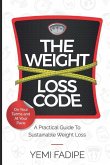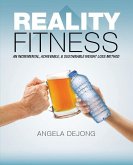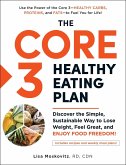* Weight loss interventions throughout history may be viewed in three stages: 1.0, 2.0 and 3.0. Most research and development efforts have focused on a wide range of diets and generic exercise modalities collectively known as the Eat Less and Move More (ELMM) strategy. ELMM is a loosely defined strategy with broad interpretations, often presented without scientific basis, and has an undeniable history of failing to reach desired results. * It should be noted that some dietary nutrient modifications and exercise programs currently available have been showing sporadically positive results at the early stages of weight loss intervention; however, lasting weight loss for broad population groups has not been achieved. * Weight Loss 1.0 approaches attributed to ancient times from 2695 BC to the beginning of the AD era were based on uneducated assumptions lacking scientific considerations by targeting numerous diets and non-structured exercises that have not brought consistently successful results. * Weight Loss 2.0 & 3.0 protocols from the First Anno Domini (AD) to the 21st Century have been representing innumerable nutrition plans and generic fitness training introduced as scientifically sound. However, the author's extensive analysis has found that the outcomes of Weight Loss 2.0 and 3.0 interventions lack relevant knowledge of biomechanics, anatomy, and bioenergetics science, which have been preventing to obtain positive results. * The fundamental problem of current weight loss interventions is that they exhibit a misconception that that neuromuscular actions support the body movement mechanism; however, skeletal joint motions are not integrated into current human movement protocols. This means relevant knowledge, including the misinformed public, is under-recognized in research and clinical settings. * This line of thinking of a muscle-powered body presents an obvious omission of the skeleton - the largest component of human anatomical structure and body movement - imposing significant limitations and contributing to the suboptimal metabolization rate, improper body movement and ineffective obesity outcomes. * It is universally understood that structure determines function. Function efficiency is compromised if the structure is not properly defined or does not operate adequately by interfering with a definitive pattern of structural sequence. * Weight Loss 4.0 follows the science of biomechanics and human anatomy to reflect energy metabolism from a biomechanical perspective and view the human body as a mechanically and biologically driven integrated system. The objective of Weight Loss 4.0 is not only to offer a different approach to weight loss but also to bring awareness of evident gaps in mainstream methodology and ensure that a long-term goal of sustainable weight management is reached. * Weight Loss 4.0 targets the functional integration of sustained (aerobic) physical movement and fat oxidation (FA-ox) to burn body fat to meet energy demands for lasting weight loss. The science of bioenergetics indicates that FA-ox is accomplished by aerobic energy pathway to support sustained physical movement effectively. * FA-ox is the process by which the aerobic energy pathway releases fatty acids from fat molecules to accomplish FA-ox within the mitochondria referred to as oxidative metabolism and use fat for fuel. * Weight Loss 4.0 framework is deemed to support optimal FA-ox sustenance that must be accomplished by proper neuro-muscular-skeletal actions and is subject to meeting movement conditions to be performed for an extended period, at moderate or vigorous intensity and steady pace and achieve fat usage for fuel. Evidence-informed data confirms that people engaged in physical activities for extended periods (running, X-country skiing, etc.) do not experience overweight problems.
Hinweis: Dieser Artikel kann nur an eine deutsche Lieferadresse ausgeliefert werden.
Hinweis: Dieser Artikel kann nur an eine deutsche Lieferadresse ausgeliefert werden.








